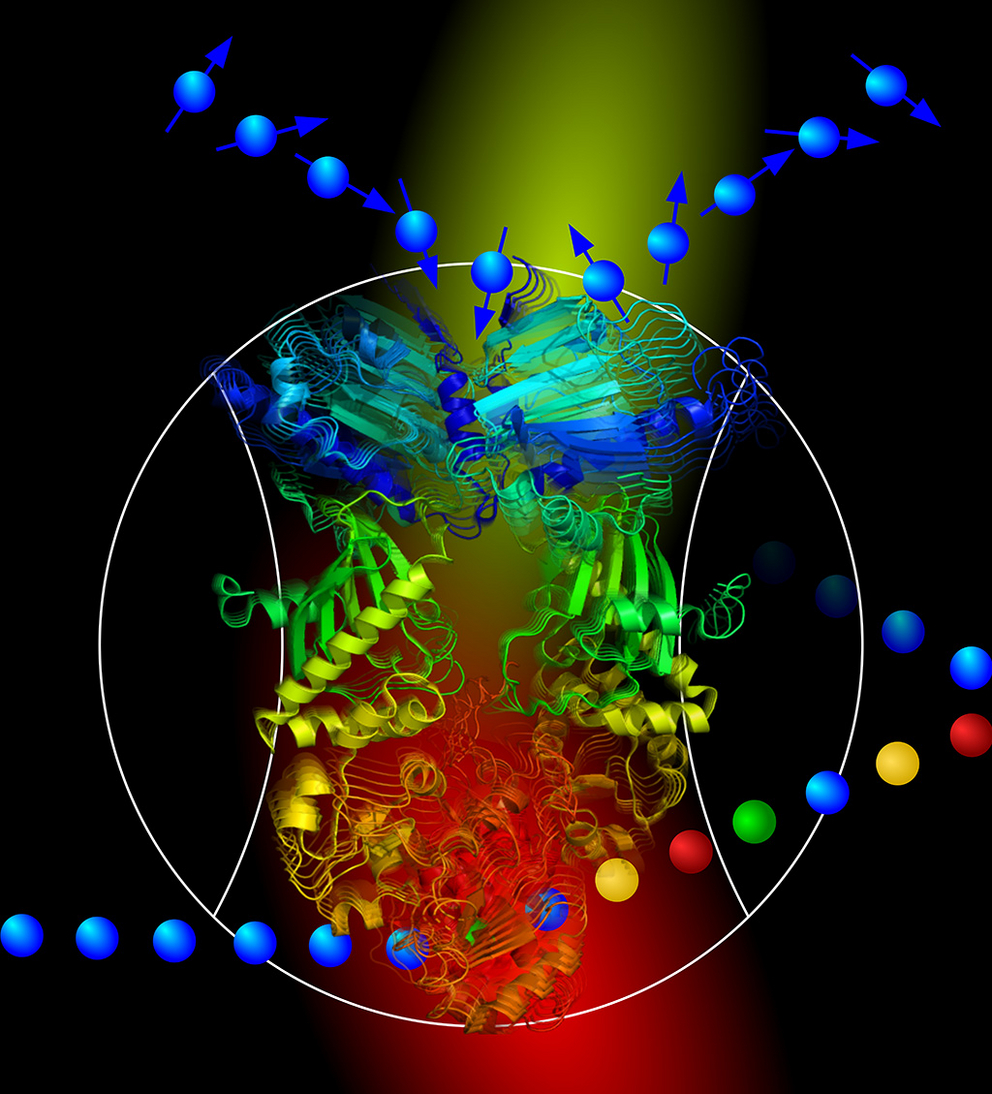The proteins in our cells are constantly in motion because atoms and molecules 'tremble' at temperatures above absolute zero. This rapid trembling forms a kind of background noise from which slower movements such as the opening and closing of proteins occur. Such slower movements are important control mechanisms for the activity and signalling function of proteins. An interdisciplinary team led by researchers from the Universities of Freiburg, Tübingen and Lund/Sweden has now investigated for the first time how these different molecular dynamics are connected. The results of the study have been published in the journal Advanced Science.


New insights into the movement of individual molecules
International team gains insights into molecular details of biological processes with techniques from physics

Artistic representation of the heat shock protein Hsp90. The different protein structures reflect the movement of the protein from the MD simulations. The fluorescence and neutron measurements are also shown schematically. Image: Christian Beck/University of Tübingen and Veronika Frank/University of Freiburg
“We wanted to find out how the changes between a protein’s functional states result from the rapid, constantly occurring molecular movements,” explains Prof. Dr. Thorsten Hugel, who is a researcher at the Institute of Physical Chemistry at the University of Freiburg and is a member of the Cluster of Excellence CIBSS – Centre for Integrative Biological Signalling Studies. “The analysis of individual molecules is already technically extremely demanding, here we combined this by quantifying the movement of the protein in the range of millionths of a second”, says Hugel.
Combined methods for insights into fast, dynamic processes
The international research team combined expertise in high-resolution microscopy, neutron scattering experiments and the computer simulation of individual molecules; techniques that are otherwise mainly used in physics research. “The unique interlocking of the different approaches has contributed significantly to the success of the project,” says Dr. Steffen Wolf from the Institute of Physics at the University of Freiburg, commenting on the joint work. His working group combined the experimental approaches in computer simulations. “Our simulation data, for example, was directly incorporated into the mathematical analysis of the neutron scattering data”, says Wolf.
Rapid movements of Hsp90 discovered
As part of the study, the researchers analysed the protein Hsp90. This heat shock protein occurs in high numbers in human cells and is important for the folding, activation and degradation of many other proteins. The activity of Hsp90 in cancer cells makes it a promising target for the development of cancer drugs.
The results show that Hsp90 performs movements that take place within approximately 150 nanoseconds. These movements are slower than the constantly occurring tremor and faster than the change between the different conformations of the protein. The researchers see this as an important mechanism for the interaction with other proteins and a starting point for further research. “There has never been such a detailed characterisation of the dynamics of a functional protein before,” says Hugel, summarising the results of the joint work. “We believe that we are presenting a forward-looking study that shows how individual biophysical methods can be combined synergistically.”
Original publication
Benedikt Sohmen, Christian Beck, Veronika Frank, Tilo Seydel, Ingo Hoffmann, Bianca Hermann, Mark Nüesch, Marco Grimaldo, Frank Schreiber, Steffen Wolf, Felix Roosen-Runge, Thorsten Hugel. The Onset of Molecule-Spanning Dynamics in Heat Shock Protein Hsp90. In: Advanced Science (2023). DOI: 10.1002/advs.202304262



